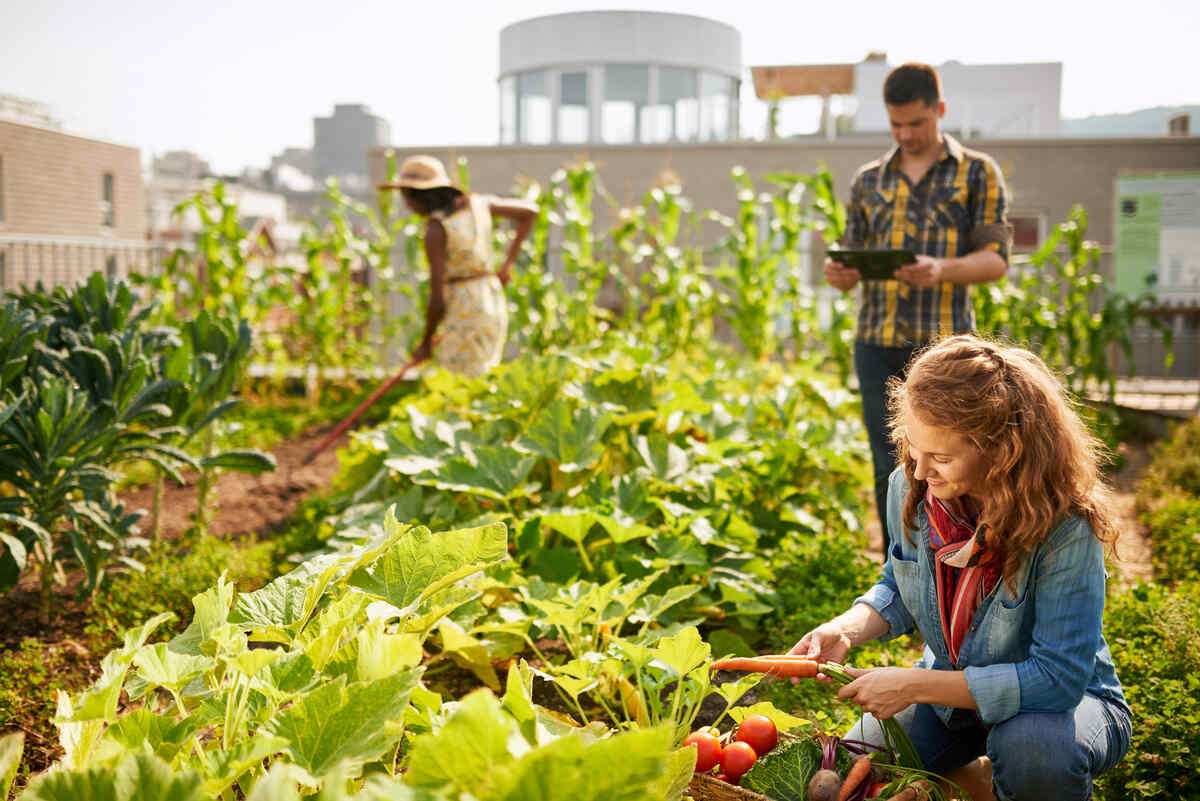The Greatest Guide To City Blooming
The Greatest Guide To City Blooming
Blog Article
City Blooming Can Be Fun For Anyone
Table of ContentsThings about City BloomingIndicators on City Blooming You Need To KnowThe 15-Second Trick For City BloomingFacts About City Blooming RevealedHow City Blooming can Save You Time, Stress, and Money.
Fascinated in expanding food for sale in the City of Chicago? Below is a listing of often asked concerns relating to the rules and laws that growers should think about when intending an urban farming job.
The zoning amendment does not change any type of various other codes managing composting, structure licenses, buying or renting City owned residential or commercial property, service licenses or environmental contamination. There are existing codes that manage these issues and they continue to be in complete effect and might apply to your project. Area yards are commonly possessed or managed by public entities, public companies or community-based organizations and maintained by volunteers.
Urban ranches grow food that is meant to be sold, either on a not-for-profit or for-profit basis. Because of their business objective, urban ranches require a company license. Yes. An area yard is allowed to offer excess create that was expanded on website if the sales are accessory or subordinate to the garden's key function defined over.
City Blooming - Truths
Composting is enabled but only for plant product that is generated and utilized on site. The quantity of compost product can not go beyond 25 cubic backyards at any given time according to the requirements in 7-28-715 of the City's Municipal Code. Yes. Because the soil at the majority of brand-new yard sites needs amending, compost, soil, timber chips, or other materials can be gotten to construct or boost the expanding area - urban gardening.

If a structure permit is called for after that the hoophouse will be considered an accessory building. You can learn even more concerning the structure authorization needs by speaking to the Division of Buildings. The 25,000-square-foot size limit is meant to prevent a solitary area garden from dominating an offered block or taking away from the block's existing property or business personality.
The limit does not use to yards found in Public Open Area (POS) districts. Can there be even more than one area garden that visit the site is 25,000 square feet on a solitary block? Fence is not required, however, gardens that have big car parking areas might be called for to install fencing or various other landscape design functions.
See This Report about City Blooming
B1 & B2 areas require that all commercial usage activities be carried out inside. Is secure fencing required for city ranches? Fences may be needed, along with landscaping and screening, for particular car park locations and outside work or storage areas depending on area and the details activity taking area.
Yes. Urban farms need building licenses and zoning authorizations prior to building. Other kinds of city evaluation might be called for depending on particular structures, activities, size, landscape design, licensing, public heath and stormwater monitoring concerns. A lot of these demands are determined in the project design or permitting process, nevertheless, the candidate might be liable to separately identify details licenses or permits that may be called for.
Yes. The kind of permit is figured out by what is taking place at the site. The Division of Organization Affairs and Consumer Protection can aid identify the details sort of service permit that's required. Yes. Off road car park is required for a lot of industrial projects in Chicago. The required variety of garage is based on the variety of workers servicing website and not the square video footage of the expanding room.
See This Report on City Blooming

Yes. A city ranch can sell garden compost product created on site, nonetheless, the procedure has to follow the laws in 7-28-715 of the Chicago Municipal Code. Yes. Aquaponic systems are enabled indoors on city ranches in numerous zoning areas. However, a zoning review and building license is required in order to set up structures or systems and a business license is required as defined over.
As much as five hives or colonies of honey might be maintained as an accessory use. Beekeepers have to register with the Illinois Division of Farming. For more details about the recommended zoning change you may call the Department of Housing and Economic Growth, Bureau of Planning and Zoning at 312.744.8563.
Farming in cities and urban locations A city farm in Chicago. Urban farming describes numerous techniques of cultivating. https://triberr.com/cityblooming, handling, and dispersing food in metropolitan areas. The term likewise relates to the location tasks of animal husbandry, aquaculture, beekeeping, and horticulture in a metropolitan context. Urban farming is distinguished from peri-urban farming, which occurs in country areas at the edge of suburbs.
The Only Guide to City Blooming
It can entail a movement of natural growers, "foodies" and "locavores", who look for to create social media networks founded on a common ethos of nature and neighborhood holism. These networks can establish by way of official institutional support, ending up being integrated into neighborhood town as a "change community" activity for lasting urban advancement.
The much more direct accessibility to fresh vegetable, fruit, and meat items that might be realised via metropolitan farming can enhance food protection and food safety and security while reducing food miles, resulting in reduced greenhouse gas emissions, consequently contributing to environment modification reduction. A few of the very first evidence of urban agriculture comes from Mesopotamia.
Report this page